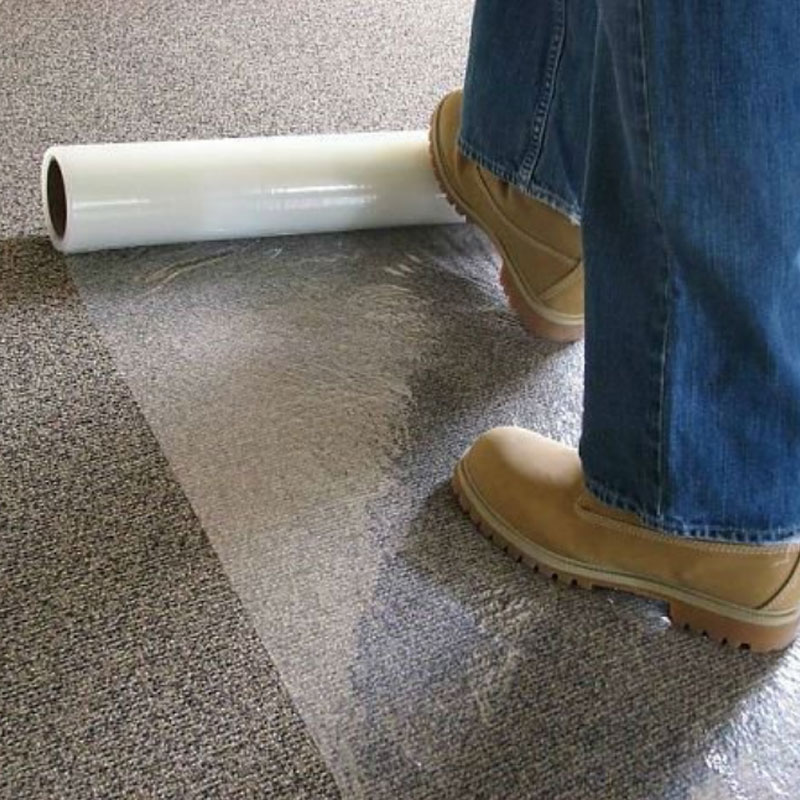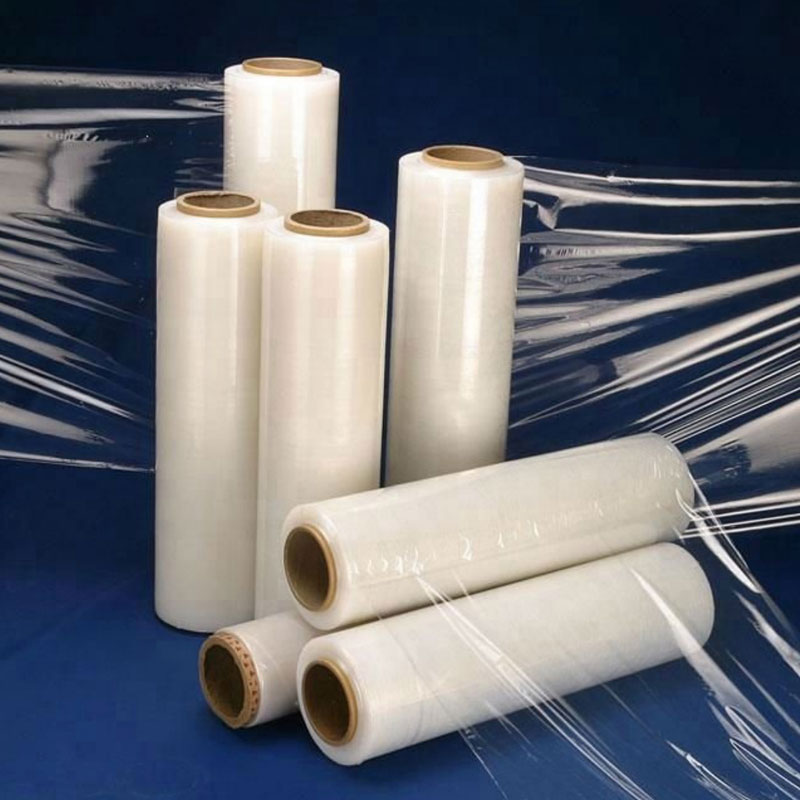1.What Makes PE Stretch Film the Superior Choice for Packaging?
Polyethylene (PE) stretch film is a widely recognized and highly effective packaging solution known for its superior performance, cost-efficiency, and versatility. Made from linear low-density polyethylene (LLDPE), PE stretch film offers several distinct advantages that make it the preferred choice for various packaging applications across different industries.
Superior Elasticity and Stretchability
One of the most notable features of PE stretch film is its exceptional elasticity and stretchability. This film can be stretched up to 300% of its original length, which provides a tight, secure wrap around products of various shapes and sizes. This high stretch ratio ensures that goods are firmly held in place, reducing the risk of shifting or damage during transport and storage.
For example, in the logistics industry, a pallet of goods wrapped with PE stretch film is less likely to experience load shifts during transit, which can prevent accidents and damage. This secure wrapping not only enhances the stability of the load but also ensures that the products arrive at their destination in perfect condition.
Excellent Tear Resistance
Another significant advantage of PE stretch film is its outstanding tear resistance. The robust nature of LLDPE makes the film highly resistant to punctures and tears, even when subjected to sharp edges or rough handling. This durability ensures that the film remains intact and continues to protect the goods throughout their journey.
In the food and beverage industry, for instance, the transportation of bottled beverages often involves heavy loads and rough handling. Using PE stretch film can prevent the bottles from breaking or becoming damaged, ensuring that the products remain intact and safe for consumption. This level of protection is crucial for maintaining product quality and minimizing waste.
Versatility Across Various Applications
PE stretch film is incredibly versatile and can be used in a wide range of packaging applications. It is available in different thicknesses, colors, and formulations to meet specific requirements, making it adaptable for various industries, including pharmaceuticals, electronics, automotive, and more.
For example, in the pharmaceutical industry, PE stretch film is used to wrap and secure pallets of medication, ensuring that they remain uncontaminated and protected during storage and transport. The film's transparency also allows for easy identification of the products without unwrapping, which is essential for inventory management and quality control.
2.How Does PE Stretch Film Contribute to Cost Efficiency?
Cost efficiency is a critical consideration for businesses when selecting packaging materials, and PE stretch film excels in this area. The use of PE stretch film can lead to significant cost savings in several ways, making it an attractive option for companies looking to optimize their packaging processes.
Material Reduction and Cost Savings
One of the primary ways PE stretch film contributes to cost savings is through material reduction. Due to its high stretchability, less film is required to achieve a secure wrap, which reduces overall material consumption. This reduction in film usage not only lowers the cost per unit of packaging but also minimizes waste, making it an environmentally friendly choice.
For example, a manufacturing company that wraps its products with PE stretch film can use significantly less material compared to traditional wrapping methods. If the company previously used 1,000 meters of film per day with conventional methods, switching to PE stretch film with a higher stretch ratio could reduce this usage to 700 meters per day. This reduction translates to substantial cost savings over time, especially for high-volume operations.
Minimizing Product Damage and Loss
PE stretch film's robust tear resistance and protective qualities also contribute to cost efficiency by reducing product damage and loss. By securely wrapping and protecting goods, the film minimizes the risk of damage during transportation and storage, which can result in significant financial losses.
Consider a scenario in the automotive industry, where car parts and components are shipped to assembly plants. Using PE stretch film to wrap and protect these parts ensures that they arrive in perfect condition, free from scratches, dents, or other damage. This protection reduces the need for replacements or repairs, saving the company both time and money.
Labor and Operational Efficiency
The ease of use and efficiency of PE stretch film also contribute to cost savings in labor and operational expenses. The quick and straightforward application process reduces the time and effort required for packaging, allowing workers to complete tasks more efficiently. This increased productivity can lead to significant labor cost reductions over time.
For instance, in a warehouse setting, workers can quickly wrap pallets with PE stretch film using either manual dispensers or automated wrapping machines. The ease of application means that workers can complete more tasks in less time, increasing overall efficiency and reducing labor costs. Automated wrapping systems, in particular, can further enhance productivity by consistently applying the film with minimal manual intervention.
3.Why Is PE Stretch Film an Environmentally Friendly Option?
Material Reduction and Waste Minimization
One of the key environmental benefits of PE stretch film is its potential for material reduction. The high stretchability and efficiency of the film mean that less material is needed to achieve secure wrapping, reducing overall plastic consumption. This reduction in material usage not only lowers costs but also minimizes waste, making it a more sustainable choice.
For example, a distribution center that uses PE stretch film to wrap its pallets can significantly reduce the amount of plastic waste generated. By using a film with a higher stretch ratio, the center can achieve the same level of protection with less material, reducing the volume of plastic that ends up in landfills. This waste minimization is crucial for companies aiming to improve their sustainability practices.
Recyclability and Circular Economy
PE stretch film is also recyclable, making it a more sustainable choice compared to other packaging materials that may end up in landfills. Many recycling programs accept PE stretch film, allowing businesses to recycle used film and reduce their environmental footprint. By choosing recyclable materials, companies can contribute to a circular economy and support sustainable practices.
For instance, a retail chain that uses PE stretch film for packaging can implement a recycling program to collect used film from its stores and distribution centers. The collected film can be sent to recycling facilities where it is processed and reused to create new packaging materials. This closed-loop system reduces the need for virgin plastic production and supports a more sustainable supply chain.
Eco-Friendly Formulations
Advancements in PE stretch film technology have led to the development of more eco-friendly formulations. For example, some manufacturers now offer biodegradable and compostable PE stretch films, which break down more rapidly in natural environments compared to traditional plastics. These innovative products provide businesses with environmentally responsible packaging options without compromising performance and durability.
A food processing company, for example, can use biodegradable PE stretch film to wrap its products, ensuring that the packaging breaks down more quickly in composting facilities. This reduces the environmental impact of the packaging and aligns with the company's sustainability goals. These eco-friendly formulations provide a viable alternative for businesses looking to reduce their environmental footprint while maintaining high packaging standards.
Reducing Carbon Emissions
The use of PE stretch film can also help reduce carbon emissions associated with transportation. By securely wrapping and stabilizing goods, PE stretch film minimizes the risk of product damage and loss during transit, reducing the need for additional shipments and lowering the overall carbon footprint. Furthermore, its lightweight nature means that less fuel is required for transportation, contributing to further reductions in greenhouse gas emissions.


 English
English
 English
English русский
русский Français
Français Español
Español Português
Português عربى
عربى











